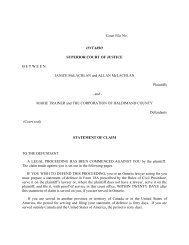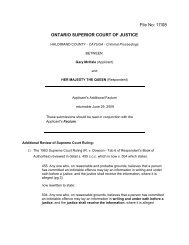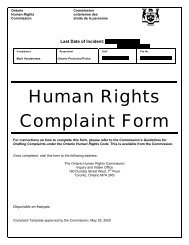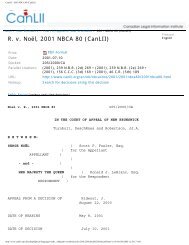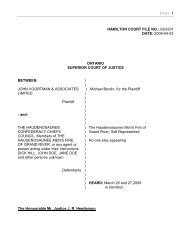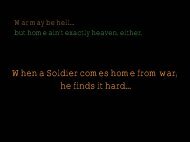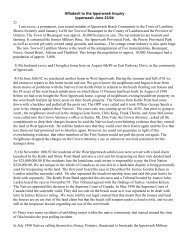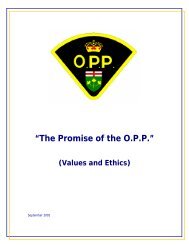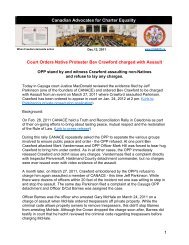Other People's Wars - Caledonia Wake Up Call
Other People's Wars - Caledonia Wake Up Call
Other People's Wars - Caledonia Wake Up Call
You also want an ePaper? Increase the reach of your titles
YUMPU automatically turns print PDFs into web optimized ePapers that Google loves.
<strong>Other</strong> Peoples’ <strong>Wars</strong> – Chapter Oneexpression of class warfare – and threw a spanner in the works by differentiating betweenwholesome heroic freedom fighters (e.g. those who used terrorism for ‘progressive’reasons) and those base reactionary villains who used terrorism for ‘non-progressive’reasons. There is also the eternal confusion generated by those who would distinguishterrorism from killers whose causes they support by defining their favorite terrorists asfreedom fighters, who are somehow exempt from the censure that their actions deserve.This distinction has also been blurred by the activities of Second World War Resistancefighters, many of whom engaged in acts that could easily be described as terrorismnowadays – although only a deep-dyed apologist with an unbalanced sense of judgmentmight describe the Israeli Army in the West Bank or the British Army in Ulster asbehaving like the Nazis. If they were, the Palestinians would have been shattered longago, as would the IRA.The main consensus is that terrorism is a form of political violence – an observation thatis far too general to be useful.What distinguishes the terrorist from the soldier are such elements as accountability,conduct, and lawful authority. The soldier is ultimately accountable to his superiors, tothe military laws, codes and courts of his organization, and to the country that he serves.The terrorist can sometimes be accountable to his superiors, who might have created acode of sorts, but neither the terrorist nor his leaders answer to any recognizablegovernment – although some governments (usually described as “Rogue Nations” by USauthorities) may use terrorists as their proxy agents on occasion.Again, these characteristics seldom delineate the terrorist from the guerrilla or therevolutionary. Nor, at times, do they distinguish this trio from the organized criminalwhen the latter strives to seek political influence through the use of violence (instead ofhis usual tactic of corruption).Military writers tend to define revolutionary or terrorist violence on another scale. TheAmerican military theorist Colonel T.N. Dupuy is one of the leading scholars who hasattempted to treat violence as a science that can be modeled, and much of his work hasbeen very influential. To Dupuy, terrorism is one of several forms of internal violenceconducted at a scale and intensity short of overt warfare – this being the stage wherebattles are openly waged between large identifiable armed bodies whose intention is toachieve decision through combat. 6Classifying terrorism and related forms of conflict (insurgency, revolutionary war, tribaluprisings, etc.) as internal warfare that is limited in scale is a way of neatly pigeonholingthe entire concept. It also means that counter-terrorism or counter-insurgency is aninternal problem, which is not always true. For example, since the 1970s, the ProvisionalWing of the IRA has launched attacks on British targets in Belgium, Germany, andGibraltar. It provided bomb-making expertise to the Basque ETA in return for a supply6.Trevor N. Dupuy; Understanding War: History and Theory of Combat; Paragon House, Ne w York.1987. A truncated version of Dupuy’s model can be found in that invaluable reference book, The HarperEncyclopedia of Military History (Fourth Edition); R.E Dupuy & T.N. Dupuy; Harper-Collins, New York,1993.4



